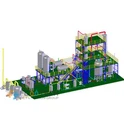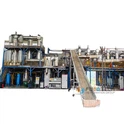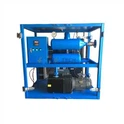Precautions for using the trace moisture meter
1. When replacing the electrolyte, be sure to ensure the sealing of the electrolytic cell, apply a layer of vacuum grease evenly on all the grinding joints of the electrolytic cell, and replace the silicone pad in time. Every time you use the trace moisture meter, check the interface between the electrolytic electrode, the measuring electrode wire and the host to ensure that there are no debris or rust at the two interfaces that affect the wire resistance.
2. If there is resistance or poor sealing at the interface, it will affect the stability of the instrument, causing the electrolyte to fail to reach an electrolytic equilibrium state. The host screen will display "Press the start key to measure" - "Balancing reagents, please wait". The above phenomenon is common, so be sure to pay attention. It is strictly forbidden to use the electrolyte after it has deteriorated. If the water content in the electrolytic cell bottle is too high. Or if too much water is injected at one time, the electrolyte will become ineffective.
3. Method for determining whether the electrolyte can be used: When the color of the electrolyte changes to light brown or light red, the electrolyte has expired. Add 0.4 microliters of pure water to the electrolytic cell under the electrolytic equilibrium state, reduce the stirring speed to 0, wait for 10 seconds, and then increase the stirring speed to the normal level, and carefully observe whether a large amount of dark red iodine appears under the platinum mesh of the electrolytic electrode. If this phenomenon does not occur, the electrolyte has expired.
4. If the electrolyte is used after it expires, the iodine in the electrolyte will adhere to the platinum mesh of the electrolytic electrode, causing the platinum mesh to change from bright white to dark brown, thus affecting the measurement. This phenomenon is common in institutions. Before using the injector to inject liquid samples into the electrolytic cell bottle, be sure to wipe the injector needle to keep the needle dry when injecting the sample. If the needle is not wiped and the sample is injected, the instrument will not be able to reach equilibrium in the next experiment.
5. When replacing the electrolyte, ensure that the surrounding environment is dry. The disassembled electrolytic cell parts should be placed on filter paper (or other dry paper), and sealed quickly after adding the electrolyte to minimize the time the parts are exposed to the air. It is strictly forbidden to clean the electrolytic cell accessories with water or liquids with high water content. They can be cleaned with anhydrous ethanol.
6. The newly replaced electrolyte should be dark reddish brown. Use a 50 microliter injector to slowly add pure water until it turns light yellow. At this time, the instrument should display the words "Balancing reagents, please wait". Be careful not to inject too much water at this time. Excessive water injection will cause the electrolyte to fail. The electrolyte should be stored in a low temperature and dry environment.
FTWS-810 Luxury type Automatic Karl Fischer Water Content tester is used for Coulometric water determination of the trace moisture content in solids, liquids, and gases with different properties according to Karl Fischer as per ASTM D1533, ASTM D6304, GB/T1600, GB7600, B/T 18619.1, GB/T 11133, SH/T 0246, SH/T 0255, etc.
If you are interested, please feel free to contact us








